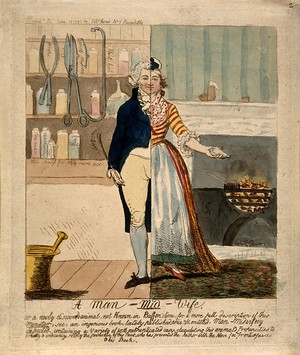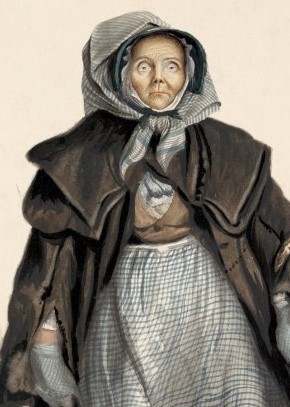The history of midwifery in the eighteenth century in England is a story of a traditionally female occupation being colonised by male medical practitioners. In 1700 deliveries were nearly all conducted by women, whereas by 1800 deliveries to prosperous families were conducted by men. Doctors and surgeons charged more for their obstetric services than their female competitors (typically 10s 6d or £1 1s per child by men, compared with 2s 6d or 5s per child by women), so women continued to deliver only the poorest expectant mothers.

The success of the ‘man-midwife’ can be attributed to a number of social and intellectual developments. The introduction of delivery by forceps in the first half of the eighteenth century, a technological refinement not used by female midwives, probably accounts for some of the increased popularity for trained men. They could achieve a successful delivery in difficult circumstances. Men could claim authority and expertise from studying human anatomy in ways not open to women.
Elizabeth Parrock, a Staffordshire midwife, probably trained for her role in the same way as most eighteenth-century women, by practising among her friends. Female midwives emerged when women accustomed to attending births as a friend or relation acquired a wider reputation for their ability to manage the birthing room. In most deliveries where the baby presented normally (head down, facing their mother’s spine) the midwife’s task was to reassure the mother and give advice, while allowing nature to take its course. The two women would probably be surrounded by the female friends of the mother, and collectively the group would keep fathers out of the room.
If the birth became abnormal, due to the malpresentation of the baby or the distress or excess bleeding of the mother, midwives had few techniques at their disposal to achieve a good outcome. Long experience might have taught them how to ‘turn’ the baby in the womb, but the only other option was to call in a surgeon to do something drastic. Women rarely if ever survived a caesarean section before the second half of the nineteenth century.

Depicting Mary or Elizabeth Leagrove, a gaol attendant in Ipswich, 1823
We don’t of course know what Elizabeth Parrock looked like. The image above is the one we have used to illustrate her in our card game for the project. We do know that she was earlier called Elizabeth Floyd, and was married to George Parrock at Bilston, Staffordshire in 1752. The couple had at least three children, baptised in Bilston and Wednesbury 1756-1760. Elizabeth, therefore, fitted the typical profile for a midwife, being a woman with children of her own but whose children were mature, allowing her to leave her household to work. We know from the overseers’ vouchers that she charged the lower sum for her deliveries, 2s6d per child, for her work in Wednesbury in the 1780s. She was the only woman recorded in the Wednesbury vouchers so far as a midwife, paid for the delivery of just three babies, yet her association with midwifery was strong enough to ensure she was described as a midwife at the time of her burial. The vouchers similarly show that her husband George Parrock was employed by the parish to mend shoes.
Elizabeth is unusual because we can know something about her working life other than her name. Most women who worked as midwives left no records of their business at all, so parish payments for delivering pauper babies is one of the few ways to see them in action. She is also unusual in that female midwives were typically paid immediately after the child was born and did not need to issue receipts, whereas male midwives allowed parents to owe him the money: consequently relatively few female midwives crop up elsewhere in our project database, with only one named midwife per county so far.
Sources: Staffordshire Archives D4383/6/1/9/1/14/20, D4383/6/1/9/2/80, Wednesbury St Bartholomew overseers’ vouchers; marriage of 29 June 1752 Bilston; burial of 4 June 1787 Wednesbury St Bartholomew.